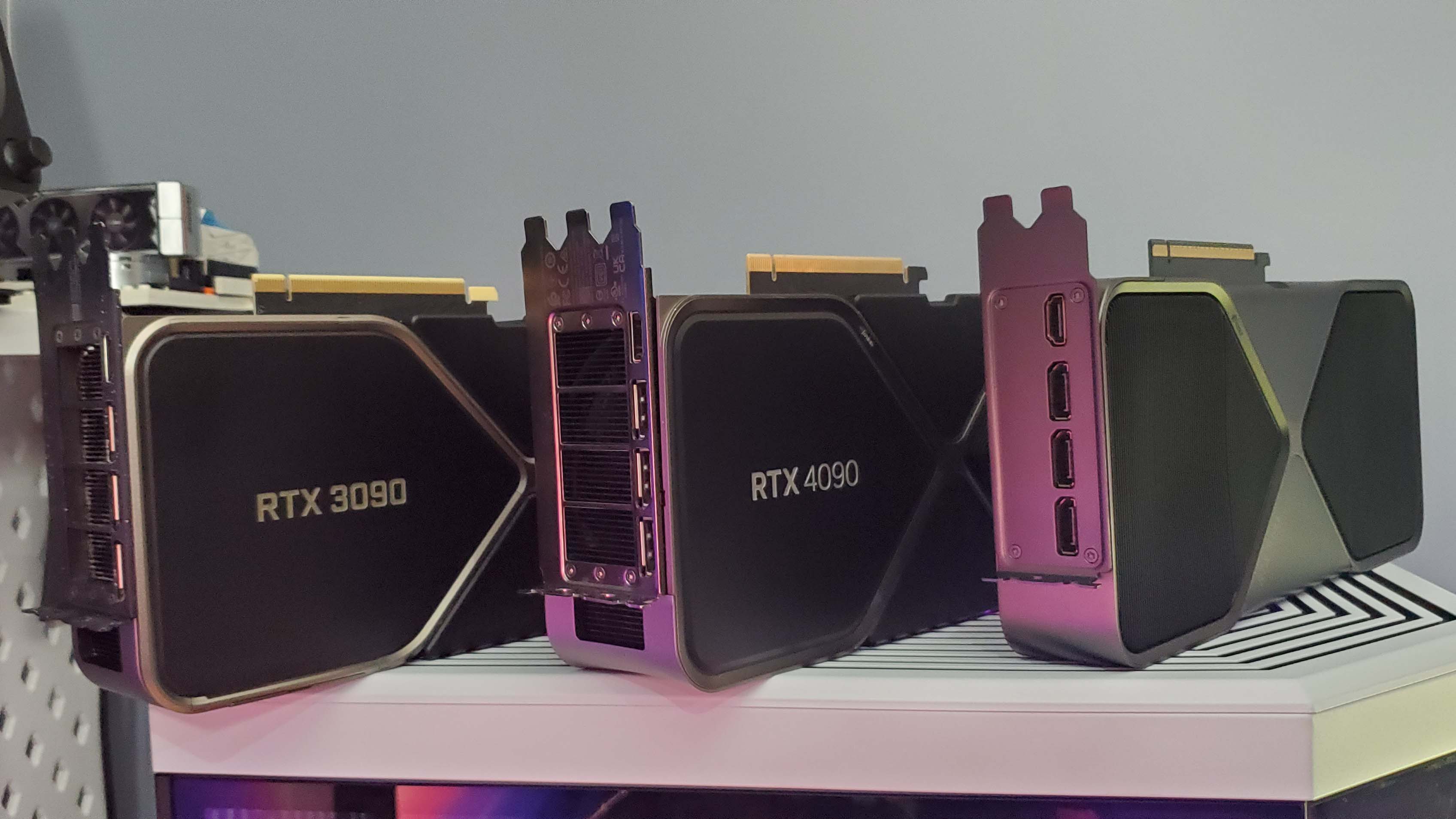The first leaked GPU specs for AMD's RX 9060 XT appear and it's pretty much an RX 9070 XT chopped in two
Named and specced to meet Nvidia's RTX 5060 Ti head-on.

With AMD's launch of its RDNA 4 graphics architecture and the Radeon RX 9070 graphics cards at the end of February, we were hoping to learn more about the mainstream models fairly quickly. Officially nothing has been said yet but the first detailed specs leak has reached the interwebs, with the RX 9060 XT claimed to sport 2,048 shaders, a 3.2 GHz boost clock, and up to 16 GB of VRAM.
That's according to Videocardz which cites no sources for the information, other than "recent information from AMD board partners", but I don't think they're too outlandish. After all, the full Navi 48 GPU in the Radeon RX 9070 XT sports 4,096 shaders so the smaller chip in the 9060 XT is unlikely to have anywhere near as many.
If what is being claimed is correct, then the 9060 XT will essentially be a 9070 XT hacked in two—you're getting half the number of shaders and a memory bus that's half as wide. Or to put it into numbers: 2,048 Stream Processors (with 128 TMUs and 64 ROPs) and a 128-bit memory bus. That's exactly the same as a Radeon RX 7600 XT but the 9060 XT gains ground by virtue of its 3.2 GHz boost clock, 16% higher than the 7600 XT's.
Regardless of what the final specs are like, AMD is going to be pitching the RX 7600 XT against Nvidia's RTX 5060 Ti, which is looking increasingly likely to come in two VRAM configurations: 8 GB and 16 GB. We've already seen claims that the RX 9060 XT will also have the same option but the one thing it doesn't have is super-fast VRAM. As AMD still uses GDDR6 for price reasons, you'll only be getting a total of 320 GB/s or so of memory bandwidth.
While we don't know what RAM speed the RTX 5060 Ti will use, one can hazard a guess at the minimum, given that the slowest GDDR7 used so far in the RTX 50-series has been 28 Gbps (RTX 5070 and RTX 5090). If the 5060 Ti uses that, it'll boast 448 MB/s of bandwidth—a hefty 40% more than the RX 9060 XT.
To counter this, AMD uses a complex but powerful cache system in its RDNA graphics chips, and like the 7600 XT, I expect the RX 9060 XT will have 32 MB of L3 Infinity Cache to make up for the relatively narrow memory bandwidth.

Of course, what PC gamers are going to care about is the price, availability, and for some, how much power it'll use. If I pop on my wizard hat and stare into my crystal ball, I can take a wild stab in the dark at all of this. Let's say Nvidia launches the RTX 5060 Ti at $375 for an 8 GB version: AMD will almost certainly pitch the RX 9060 XT at less than this, perhaps by as much as $50, but whatever it does, it'll probably be quite close to the 7600 XT's launch price of $329.
The biggest gaming news, reviews and hardware deals
Keep up to date with the most important stories and the best deals, as picked by the PC Gamer team.
Back then MSRPs made sense, but these days I wouldn't be surprised if very few board partners offered anything at sub-$350 and I should imagine there will be a few 9060 XT models reaching close to $499.

Best CPU for gaming: The top chips from Intel and AMD.
Best gaming motherboard: The right boards.
Best graphics card: Your perfect pixel-pusher awaits.
Best SSD for gaming: Get into the game ahead of the rest.
Hopefully, there will be a decent supply of all these cards, especially the more affordable ones. But even if there is, the demand for GPUs is sky-high at the moment so stocks will probably disappear very rapidly for the first few weeks or even months.
As to the power consumption, I reckon it will be north of 230 W. The 7600 XT is a 190 W graphics card but the 9060 XT is clocked much higher and the GPU housed dedicated matrix units for accelerating the AI-powered FSR 4 upscaling system. The 4,096 shader 9070 XT uses up to 304 W so it's clear that RDNA 4 loves a decent amount of power.
Until AMD officially launches the Radeon RX 9060 XT, all of this is guesswork and rumour. Whether it has the measure of the RTX 5060 Ti won't be certain until we've run both cards through our full benchmark suite, but I suspect the Nvidia card will be the faster of the two, albeit with a higher price tag. Throw in DLSS 4 and it becomes trickier still, as AMD doesn't have anything yet to counter Nvidia's Multi Frame Generation.
But the way things are at the moment, any semi-decent GPU with a price tag that doesn't require the selling of an organ or three on the black market is going to sell well.

Nick, gaming, and computers all first met in 1981, with the love affair starting on a Sinclair ZX81 in kit form and a book on ZX Basic. He ended up becoming a physics and IT teacher, but by the late 1990s decided it was time to cut his teeth writing for a long defunct UK tech site. He went on to do the same at Madonion, helping to write the help files for 3DMark and PCMark. After a short stint working at Beyond3D.com, Nick joined Futuremark (MadOnion rebranded) full-time, as editor-in-chief for its gaming and hardware section, YouGamers. After the site shutdown, he became an engineering and computing lecturer for many years, but missed the writing bug. Cue four years at TechSpot.com and over 100 long articles on anything and everything. He freely admits to being far too obsessed with GPUs and open world grindy RPGs, but who isn't these days?
You must confirm your public display name before commenting
Please logout and then login again, you will then be prompted to enter your display name.

